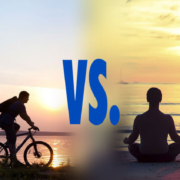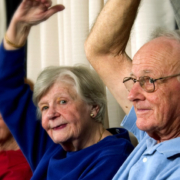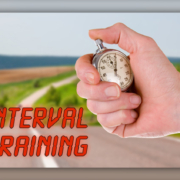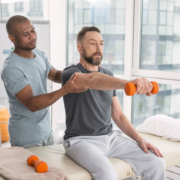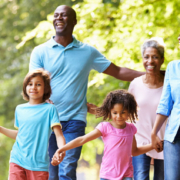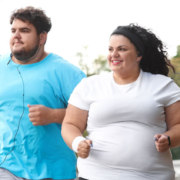The Bottom Line on Masks
To satisfy my own curiosity, I wanted to do a run/walk to see how wearing a mask might impact my performance. This is tricky for someone with a scientific background; trying to duplicate everything with the exception of the one variable, the mask, is difficult when you’re outdoors. But the weather has been pretty stable: overnight lows in the mid 60s, rising to 90 degrees almost every day with little humidity.
I decided to run the half-mile loop in my neighborhood six times just like I normally do. Five days before I ran it with the mask, I had run it faster than I had in a couple of years; I’m not setting any speed records here, but my knee appears to be getting stronger and I’m able to open the jets a little bit. I ran the same six laps at the same time of day and at the approximate same temperature. The only variable was the mask.
Before I tell you the results, I have to say that I spent way too much time thinking about the mask instead of just running or walking. At this point, I’m running for one minute, and walking for 90 seconds. I maintained that with no real problems once I stopped thinking about the mask. I also must say then I decided to bulk up the day before by over-eating some great tasting pasta I made. I was four pounds heavier than last week. Five days before, I ran the six laps in 40:52. This time I ran it in 41:20—28 seconds slower.
Did I have any trouble breathing? Not really other than thinking about it too much. Did it affect my ability to run? I don’t think so. I intentionally tried not to make it a race, but just to go out and run/walk the best that I could. I didn’t feel like I was breathing any harder while walking or running. My recovery from the run seemed about the same. So I would have to overall say that wearing a two-layer, cloth mask (just like in the picture) didn’t have any impact on my ability to exercise.
Should Everyone Wear a Cloth Mask?
No. The Centers for Disease Control does not recommend cloth masks for:
- Children younger than two years old.
- Anyone who has trouble breathing.
- Anyone who is unconscious, incapacitated, or otherwise unable to remove the cloth face covering without assistance.
They also list some pragmatic concerns for those who must travel in populated areas but cannot wear a mask. They do not qualify what “trouble breathing” means, but certainly respiratory issues as well as cardiac issues would probably be included. Of course, if you have heart trouble or respiratory problems, taking chances with your health doesn’t seem like a smart choice; I’d recommend staying home as much as you can.
The Size of a Pea or the Size of a House?
For those of you who think size matters, let’s talk about the relative sizes of the various items under discussion when we talk about masks.
Viruses are so small they’re measured in nanometers; a nanometer is one millionth of a millimeter. There are about 25 millimeters in an inch, so take one twenty-fifth of an inch and divide it into a million: that’s a nanometer. A human hair is around 75,000 nanometers. So here’s what you need to know:
Coronaviruses are 125 nanometers.
Droplets vary from 2,000 nanometers to 100,000 nanometers.
By definition, an N95 mask blocks 95% of particles of 300 nanometers.
Cloth varies so much it’s hard to determine the size of the comparative spaces between fibers, so it was hard to find any info at all. The best I could find is that it’s in roughly the same size range as the droplets; used, folded, tightly woven cotton has about 20,000 nanometers between fibers.
It’s hard to visualize the comparative sizes when we’re talking about a unit of measure that’s so incredibly small. Let’s transform everything into familiar sizes by changing nanometers to inches:
A coronavirus would be 10.5 feet tall, so it probably wouldn’t fit in your house.
An N95 mask blocks particles equivalent to 25 feet or more.
Droplets start at the size of a 12-story building (167 feet) up to almost 600 stories (over 8,000 feet).
So you can see how a cloth mask that stops droplets from getting through would allow plenty of oxygen and carbon dioxide to pass freely.
But how does a mask stop a 125-nanometer coronavirus if it filters out particles of 300 nanometers? It’s important to know the virus isn’t floating around by itself—it’s hitching a ride on the droplets of moisture we breathe out, and a mask definitely stops those.
Final Research Paper
Here’s a quote from the 2013 paper I used as a basis for the effectiveness of cloth masks:
“In the questionnaire on mask use during a pandemic, six participants said they would wear a mask some of the time, six said they would never wear a mask, and nine either did not know or were undecided. None of the participants said that they would wear a mask all of the time. With one exception, all participants reported that their face mask was comfortable.”
That seems to be where we are today during this pandemic, seven years after that study was published. Only today it’s reality, not answers to a questionnaire.
The Difference in Lives
If none of that convinces you to wear a mask, maybe this will: a new model by the University of Washington predicts more than 208,000 Americans will die from COVID-19 by November.
But if 95% of the population wears a mask in public from now until then, that number would drop to 162,808—a difference of more than 45,000 lives. Let’s bring that home. The U.S. has 3,141 counties; would you wear a mask to protect 14 people in your county?
The Bottom Line
This week I’ve reviewed some of the major objections that people have to avoid wearing a cloth mask, and the research doesn’t support the objections.
The final objection is that people are willing to take their chances that they will get only a mild version of the virus; it seems their freedom to enjoy life supersedes the safety of those around them. Maybe like Gus in Lonesome Dove, they’ll take their chances with an infection and die with their boots on. I challenge those people to do some research on long-term consequences of COVID-19.
It’s no longer a safe assumption that your local hospital will make everything okay if you get ill. Every area with a COVID-19 spike has seen hospitals at capacity, healthcare workers at or beyond the breaking point, and the necessary supplies running short, including PPE. All respect to healthcare workers, but they’re human and at some point mental, emotional, and physical exhaustion sets in and they’re not going to be able to give their best. Maybe you could wear a mask for the sake of the people you know in healthcare, like our daughter-in-law.
What are you prepared to do today? Wear the damn mask!
Dr. Chet
References:
1. https://bit.ly/3gvDH0J
2. Disaster Med Public Health Preparedness. 2013;7:413-418.


